Tubeless systems have been around a few years for mountain bikes with obvious benefits. Without inner tubes, there is no need to worry about dreaded pinch flats which occur when the tube is pinched between the ground and the rim. And, without worrying about pinch flats, you can run much lower tire pressure which means better traction. Not to mention, if you do get a thorn in your tire or a small tear from an encounter with a rock, the sealant inside your tire can save you from getting a flat.
Now that tubeless has entered the world of road cycling, what are the benefits?
So, what are you waiting for? Ready to go tubeless?
Learn more about Giant Tubeless Wheel Systems and additional helpful How-to Information here.
1.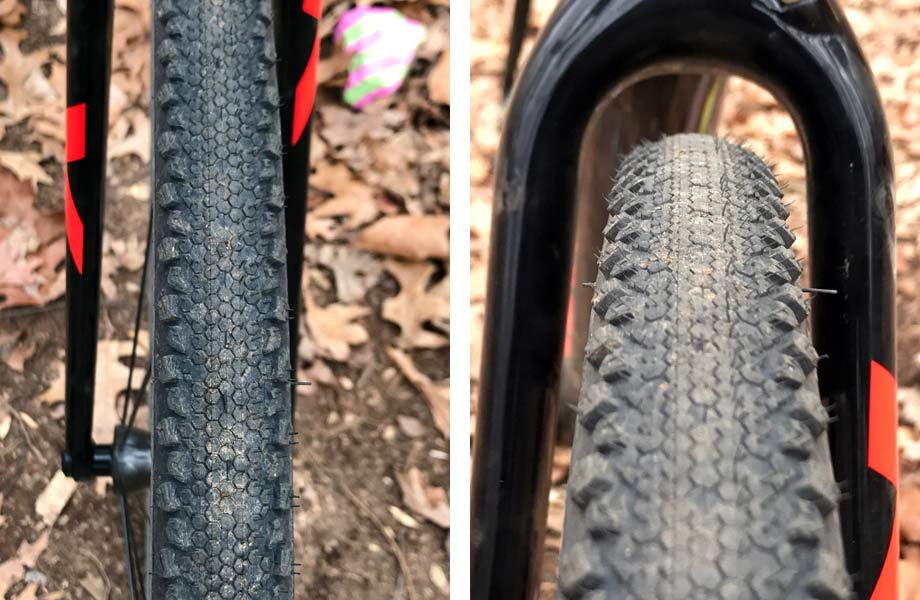 Ensure your tires and rims are tubeless-ready. Don’t worry, it should say so right on the label!
Ensure your tires and rims are tubeless-ready. Don’t worry, it should say so right on the label!
2. Remove your wheel from your bike.
3. Remove the tire and tubes from the rim. Check out our Fix-a-Flat guide for tips on removing your wheel, tires, and tubes.
4. If your rim is wrapped with a plastic rim strip that is not tubeless compatible, remove the rim strip.
5. Tape rim using tubeless-specific rim tape.

6. Using a metal pick or a small Phillip’s head screwdriver, poke a hole where the valve stem will be inserted. Be careful not to make this hole too big.
7. Insert tubeless valve stem into the valve hole and secure using plastic O-ring and washer provided.
8. Put the tire on the rim. If the tire is directional, make sure it is on correctly. Get more tips on how to change a tire by checking out our Fix-A-Flat Guide.
9. Insert recommended amount of tubeless sealant into the tire. There are two different ways of doing this:
There are two different ways of doing this:
10. After the tire is mounted completely onto the rim with sealant inside, roll the tire on the ground to disperse the sealant. Pull the bead of the tire to the edge of the rim, if possible.
11. Inflate the tire! The best way to get the tire to seal is to add air as quickly as possible. That is why using an air compressor is the best method. If you do not have access to an air compressor, use a charger pump, like the Giant Control Tank Tubeless Inflator.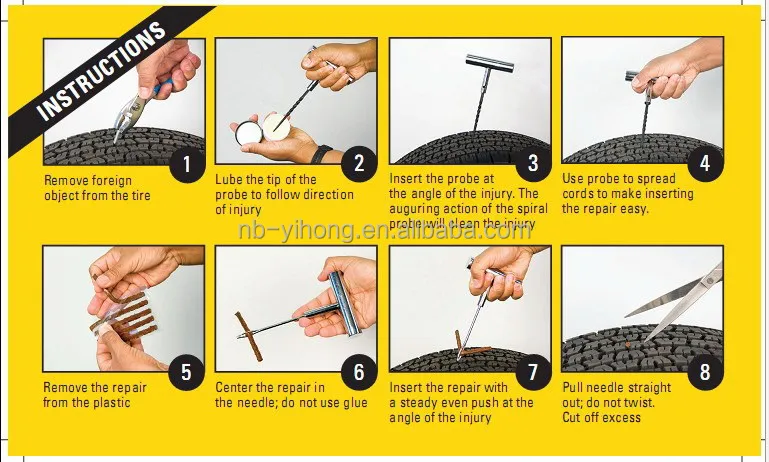
PRO TIP: Are you using an air compressor or tubeless inflator system and still having trouble getting your tire to inflate? Try removing the valve core on your tubeless valve. This will allow air to enter your tire even faster than it would through the valve. Just be careful once you remove the inflator nozzle from the valve since all the air will rush back out of the tire! Be ready with your finger to hold the air in and quickly replace the valve core with your tool.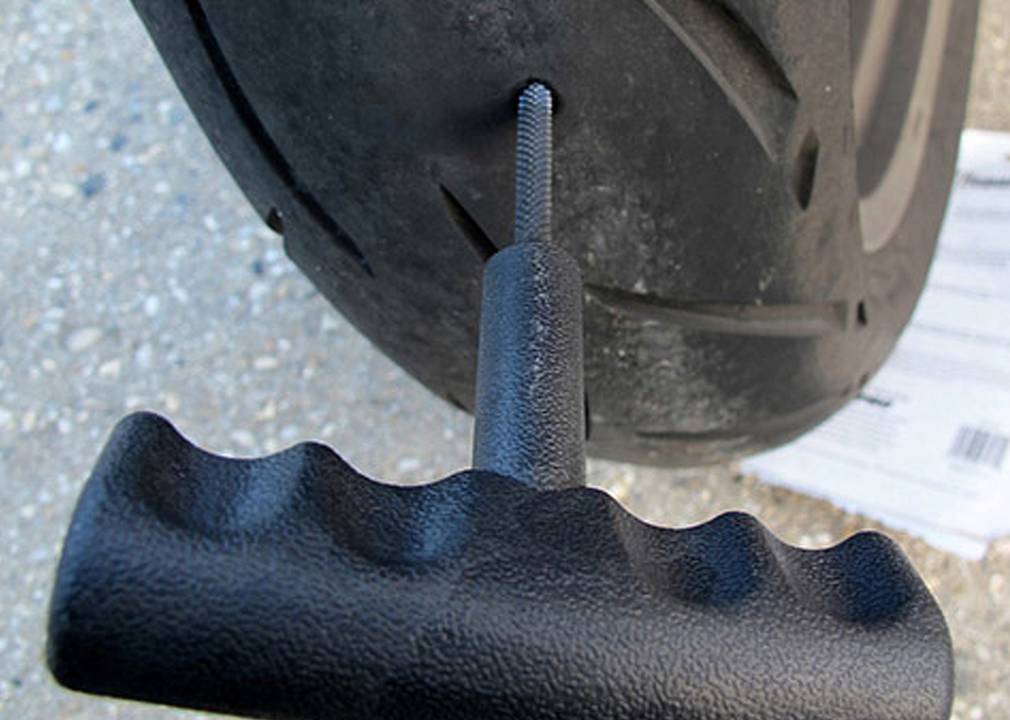
12. After the tire is inflated and the bead is seated, bounce the tire on the ground. This will help disperse the sealant inside of the tire.
13. Replace your wheel and take your bike for a spin. Riding your bike right after setting the tires up tubeless will ensure a good seal.
14. You did it!
*If your tires are already set up tubeless and you are just changing to new tires, disregard steps 5-7. Remove any old sealant with an absorbent cloth and check your rim tape for damage before putting the new tire on.
*Over time, the sealant inside your tires will dry up and stop protecting you from pesky flats. Hot/ dry climates will cause the sealant to dry up faster. Check your sealant levels by shaking the wheel while it is off the bike. You should be able to hear the sealant sloshing around inside. If you can’t hear anything, you need to add more sealant! Otherwise, check your levels/ top off your sealant every 30 days.
Tubeless tires have eliminated the risk of pinch flats.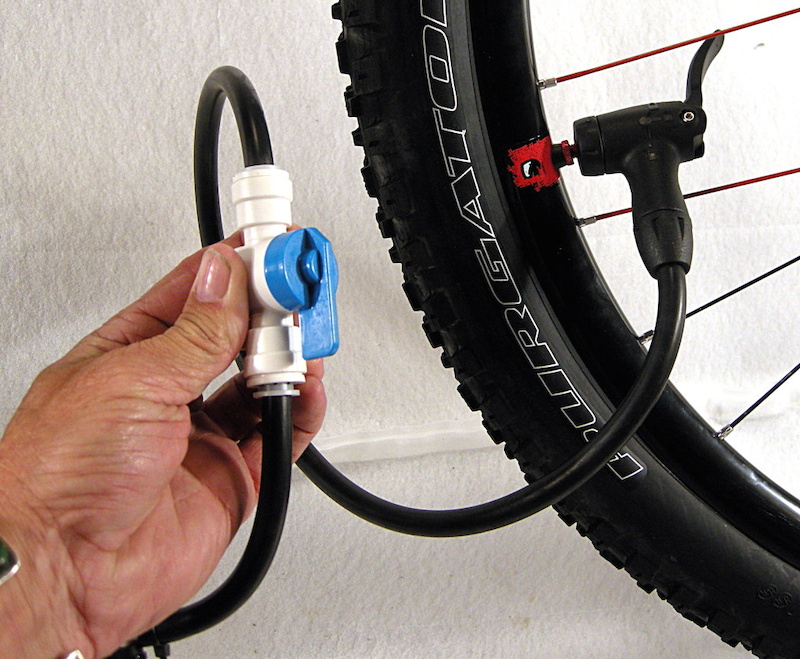 For riding in really rough terrain, they are a game changer. But like all new technologies, it’s taken some trial-and-error until we figured out how to run bicycle tires tubeless.
For riding in really rough terrain, they are a game changer. But like all new technologies, it’s taken some trial-and-error until we figured out how to run bicycle tires tubeless.
Of course, tubeless tires are nothing new. Car tires have been tubeless for decades, but translating that technology to much more flexible and lighter bicycle tires has not been easy. (We don’t want to ride on rubber that’s as stiff and heavy as car tires!) Modern bicycle tires fall into two groups:
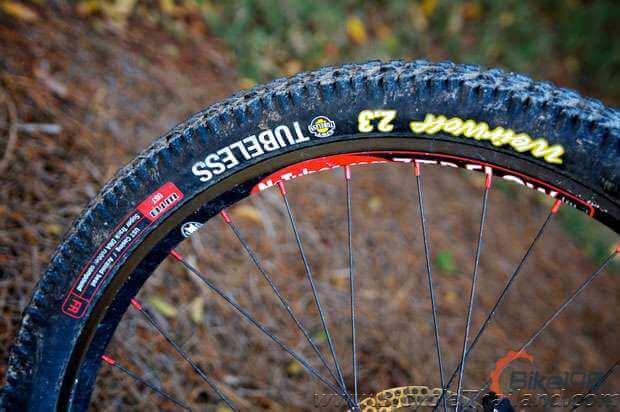 The sealant also will seal small punctures that otherwise would cause a flat. Most Rene Herse tires are ‘tubeless-compatible.’
The sealant also will seal small punctures that otherwise would cause a flat. Most Rene Herse tires are ‘tubeless-compatible.’Key to mounting tubeless tires is the right technique. This is especially important with supple tires. Stiff tires mount easily – just like car tires – because their casing is so stiff that it either touches the rim walls and seals, or it doesn’t.
Supple casings make tires fast and comfortable because they flex easily. This means that they may contact the rim in a few places, and have air gaps in others – making them harder to mount and seal tubeless. They follow the general rule of high-performance components: The tolerances need to be a bit tighter, and working with them requires a little more skill.
It’s not hard to install supple tires tubeless, if you work methodically. Here is how I installed my Rene Herse Extralights tubeless while traveling in Japan, with no access to a workshop and just a few tools.
To mount a tire tubeless, here is what you need: a tubeless valve; a valve core tool; a syringe for injecting the tubeless sealant; sealant; a tire lever; an inner tube; a tubeless-compatible tire. Your rims also must be tubeless-compatible, and covered with tubeless rim tape. It’s good to have extra rim tape on hand.
Your rims also must be tubeless-compatible, and covered with tubeless rim tape. It’s good to have extra rim tape on hand.
I only could find Stan’s sealant in Japan. It worked fine, but we recommend SealSmart because it does a better job sealing the slightly porous sidewalls of supple tires.
You also need a pump to inflate the tire. A floor pump suffices, and in a pinch, you can get away with a frame pump. You do not need an air compressor. In fact, if you use an air compressor to make up for problems in tire/rim fit, your tire may blow off the rim later without warning.
For safe tubeless installation, a good fit between tire and rim is extremely important. Unfortunately, many OEM rims are slightly undersize, because that makes it easier to install tires in the bike assembly plants. (Imagine a rim that is slightly oversize. For a factory that needs to mount 10,000 tires a month, spending five extra minutes per tire would be a total disaster. That is why OEM rims tend to run small, and never should be larger than spec. OEM tires are installed with tubes, where a slightly undersize rim doesn’t pose a problem.)
That is why OEM rims tend to run small, and never should be larger than spec. OEM tires are installed with tubes, where a slightly undersize rim doesn’t pose a problem.)
If your tire goes on easily, the rim is undersized. Don’t try to install the tire. It may work fine at first, but it can blow off the rim without warning. If this happens in your workshop, it’s just a nuisance (and a big mess). If it happens on the road, the consequences can be far worse.
If your rim is undersize, it’s not the end of the world – there is a solution. Build up the rim bed with additional layers of rim tape. Some mechanics use Gorilla Tape for the extra layers – it’s a little thicker than standard tubeless tape. (Always use tubeless tape as the first layer on the rim to seal the spoke holes.) The tire should be a slightly tight fit. This makes sure that it seats correctly and doesn’t blow off the rim later.
Before you mount your tires, inspect your rim tape. It needs to make an airtight seal with the rim.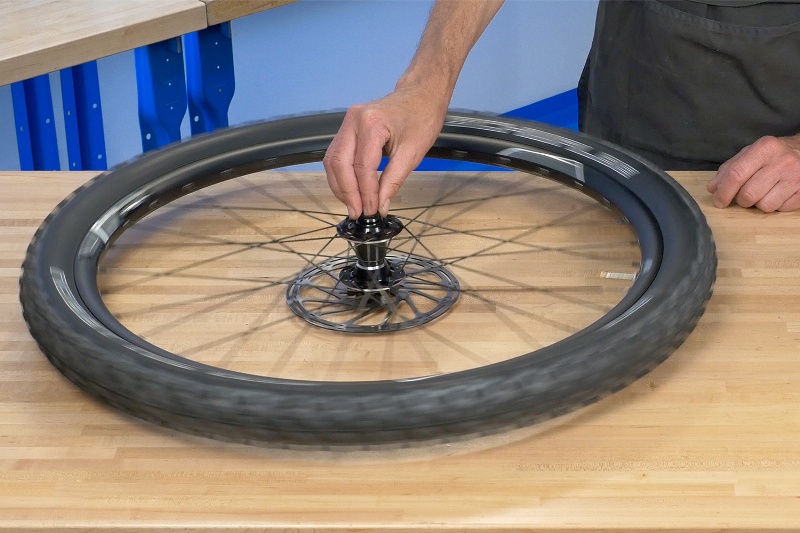 If you have any doubt – if there are gaps, wrinkles, or if the tape is folded over – replace it. Wipe the rim with alcohol to remove oils and other residue from the manufacturing process. When you install new tape, first push it onto one shelf, then into the well, and only then onto the second shelf. This ensures that the tape goes on straight and centered. It’s hard to overstate how important this step is: Many ‘leaky tires’ can be traced to a poor seal between the rim tape and the rim – and then the air escapes through the spoke holes to the inside of the rim.
If you have any doubt – if there are gaps, wrinkles, or if the tape is folded over – replace it. Wipe the rim with alcohol to remove oils and other residue from the manufacturing process. When you install new tape, first push it onto one shelf, then into the well, and only then onto the second shelf. This ensures that the tape goes on straight and centered. It’s hard to overstate how important this step is: Many ‘leaky tires’ can be traced to a poor seal between the rim tape and the rim – and then the air escapes through the spoke holes to the inside of the rim.
When installing tires, make sure that the bead is in the rim well (above) all around before you lift the last part of the bead over the rim edge. The well is there to provide slack for the bead – the rim’s diameter is smaller in the center than toward the rim walls. With supple tires and tubeless rims, parts of the bead can end up on the shelf when you mount the tire. Push the bead into the rim well all around the tire – then the last bit of the bead will slip easily over the sidewall.
We recommend installing the tire with a tube first. The tube pushes the rim tape into place and makes sure it adheres properly to the rim. This prevents sealant from seeking between rim and tape and dislodging the tape. Then air can escape through the rim’s spoke holes… (Also make sure to wipe off the rim with alcohol before installing the tape to remove all oils and residue from the manufacturing process.)
If you use a floor pump to seat the tire, the tube also seats the beads and gives the tire its shape. Make sure both beads pop into place. Then unseat one bead (the one that popped into place first) by pushing it into the rim well, and remove the tube.
Install the tubeless valve. Don’t forget the valve nut that holds the valve in place. It pulls the valve’s rubber cone into the rim’s hole to create a tight seal. Don’t overtighten the nut: If the valve gets clogged with sealant or the tubeless setup fails, you’ll need to be able to remove the valve on the road to install a tube.
Before you inflate the tire, seat the bead as far around the rim as possible, starting at the valve.
Pull the tire upward and move the bead outward, until it sits on the shelf next to the rim wall.
Continue until the tire is too tight to pull upward. The remaining air gap is small and furthest from the valve. It will seal as the pressure pushes the tire outward.
Inflate the tire ‘dry’ without sealant at first. That way, if you need to remove the tire to add more rim tape, there won’t be messy sealant inside. Pump quickly to build up pressure faster than the air escapes.
Watch the tire as it seats. On the left, the line molded into the tire sidewall is still hidden by the rim wall. The bead hasn’t emerged from the rim’s well yet. Keep pumping until you hear a loud ‘pop’ as the tire seats.
On the right, you can see all of the line that is molded into the sidewall. Make sure it’s parallel to the rim edge all around the tire. Check this on both sides.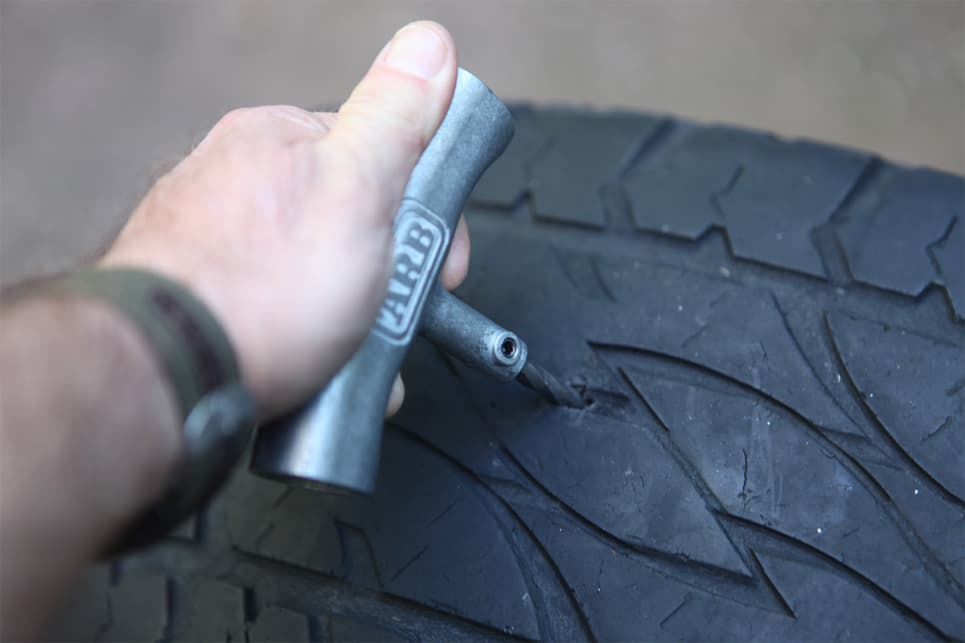 If it’s OK, then the tire is seated on the rim.
If it’s OK, then the tire is seated on the rim.
If the tire doesn’t seat, take it off, and add more rim tape to create a tighter fit and smaller air gaps. If you use an air compressor, the tire should seat easily. If you need huge blasts of air to seat the tire, then the rim is too small. Build up the rim with extra tape, rather than risk a blow-out in the future.
Now the tire is inflated and looks great, but air will escape through small cracks and microscopic holes. To seal the tire, add sealant. Let out the air and unscrew the valve core. The beads will remain seated. (If a bead comes unseated now, it wasn’t properly seated in the first place.)
Turn the wheel so the valve is neither at the top nor at the bottom of the tire, where sealant would spray back out of the valve. Shake the sealant vigorously for a minute, so the solids are in suspension. Don’t skimp on this step! Otherwise, you’ll just inject colored water into the tire, and it won’t seal.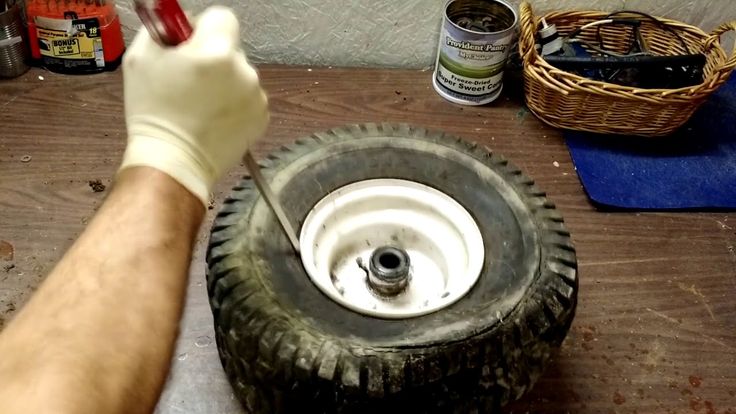
For our Rene Herse tires, we recommend Seal Smart sealant. It seems to seal the supple sidewalls better than other brands. When mounting the tires in the photos, I was in Japan, and the Seal Smart sealant had not yet been released. I couldn’t find our second choice, Orange Seal. So I used Stan’s. It worked fine.
Make sure to use enough sealant. Wide tires have a lot of surface area. To seal properly, you need about 90 ml (3 oz) – one to one-and-a-half of the little bottles shown in the photo.
Replace the valve core. When I installed the tires tubeless in Tokyo, I didn’t have a valve core tool. A small adjustable wrench will do the job in a pinch.
Inflate the tire again. Since it’s already seated, this will be easy.
Close the valve. Now the tire looks ready to roll, but the sealant must still be distributed to seal all the microscopic gaps. Just riding the tire isn’t enough to stop all the tiny leaks.
There are different techniques for distributing the sealant.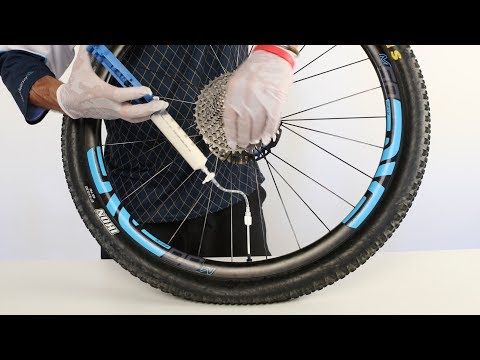 I’ve found this one to work best, because it methodically works the sealant into every part of the tire and rim interface. Make sure you have enough room. Don’t hit the ceiling, furniture, or your head. (Don’t ask how I know!)
I’ve found this one to work best, because it methodically works the sealant into every part of the tire and rim interface. Make sure you have enough room. Don’t hit the ceiling, furniture, or your head. (Don’t ask how I know!)
Hold the wheel steady (left), so the sealant collects at the bottom. Quickly move the wheel upward (center). Centrifugal force will keep the sealant right under the tire tread. Hold the wheel over your head (right), still slightly tilted away from you. Now the sealant runs downward, covers the sidewall, and seeps into the gap between tire and rim.
Rotate the wheel a few degrees and repeat. (Start with the valve at the bottom, so you have a reference point.) Once you’ve worked all the way around the tire, turn the wheel around, and repeat on the other side. Now your tire is ready to ride. Go for a ride immediately, even if it’s just a few times around the block. This will help distribute the sealant further.
If your tire loses air overnight, check it like a leaky inner tube. Often, you can hear and feel the air escape. Hold the tire so that gravity pulls the sealant into the leak. If it doesn’t seal, there may not be enough sealant in the tire.
Often, you can hear and feel the air escape. Hold the tire so that gravity pulls the sealant into the leak. If it doesn’t seal, there may not be enough sealant in the tire.
Now your tubeless tire is ready to roll. Enjoy the ride!
Tubeless tips:
 If the sealant dries out, air will start leaking. Then the tire can suddenly break loose from the rim wall and lose all its air. Don’t ride your tires when there is no liquid sealant left inside – the sealant not only acts as flat protection, but it constantly seals the tire against the rim.
If the sealant dries out, air will start leaking. Then the tire can suddenly break loose from the rim wall and lose all its air. Don’t ride your tires when there is no liquid sealant left inside – the sealant not only acts as flat protection, but it constantly seals the tire against the rim.Click here for more information about Rene Herse tires.
A tube tire for a passenger car consists of a tire and a tube with a valve fitted with a cap or key cap.
The chamber is an annular closed rubber tube with a rubber-metal valve. It is made of elastic rubber and serves only to hold compressed air.
Chambers operate under severe conditions, experiencing alternating deformations at high temperatures. Therefore, rubber for chambers must be airtight, elastic, resistant to thermal aging, not change its physical and mechanical properties at different ambient temperatures. The size of the chamber must strictly correspond to the size of the tire with which it is completed. nine0005
If we are talking about tires for passenger cars, tube tires are now a thing of the past. Foreign manufacturers have abandoned tubes, and now only tubeless tires are on the market. Cameras can be seen on domestic tire models, but not on all. Everything goes to the fact that cameras will soon become history.
A tubeless tire differs from a conventional one - it has a sealing layer 1.5...2.0 mm thick, which is vulcanized to its inner surface. It is made from a mixture of natural and synthetic rubbers with reduced gas permeability. nine0005
The tire beads are provided with a sealing rubber layer, which provides the necessary tightness in the area of the seat beads on the shelves of the wheel rim. This is facilitated by the special design of the tire beads, designed to increase the angle of inclination of the toe of the bead and the increased interference of the beads on the landing shelves of the rim.
For tubeless tyres, plug-in rubber-to-metal valves (fig.
Advantages of tubeless tires:
The main advantages of tubeless tires compared to tube tires are:
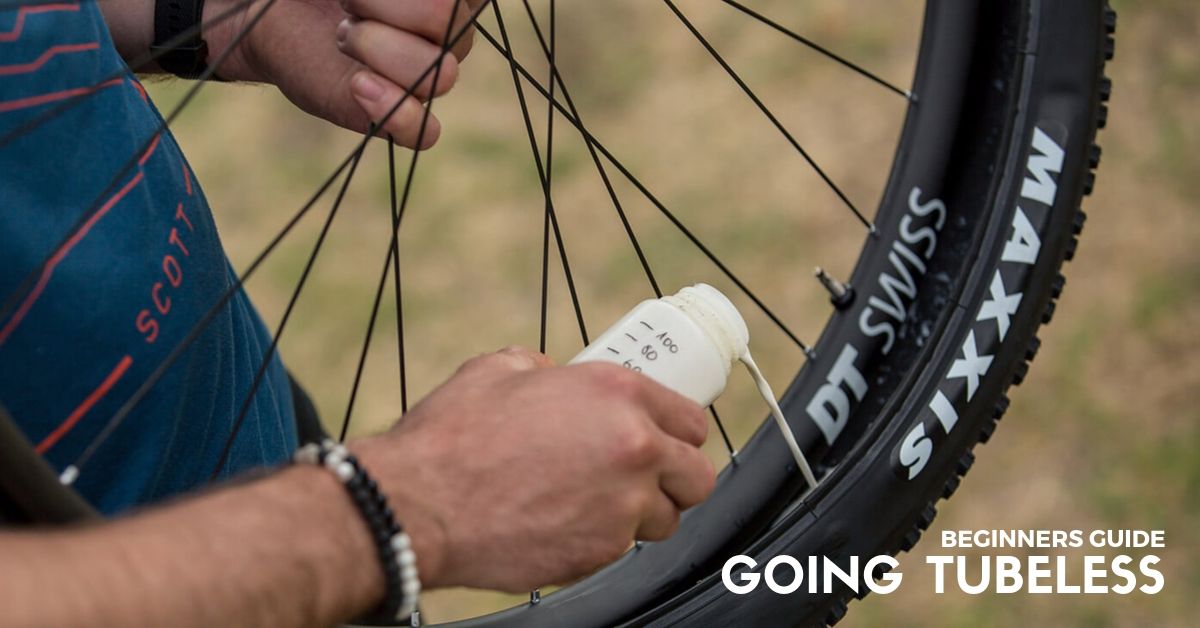 ..12% more mileage, which is achieved by better temperature conditions due to increased heat transfer from the tire to the rim and the stability of the internal air pressure in the tire, as well as the absence of friction between the tire and the tube;
..12% more mileage, which is achieved by better temperature conditions due to increased heat transfer from the tire to the rim and the stability of the internal air pressure in the tire, as well as the absence of friction between the tire and the tube; Attention:
At the same time, the use of tubeless tires requires careful mounting and dismantling. Damage to the bead flanges, especially steel ones, can lead to depressurization of a tubeless tire. If a tire is damaged, it must be repaired by specialists using equipment designed for this purpose. nine0005
In case of loss of pressure, do not drive with a flat tire. this will destroy the hermetic layer.
The tube is not inserted into the tubeless tyre. At first glance, you increase the strength of the tire, in fact, an air cushion is formed between the chamber and the pressure layer, contributing to the destruction of the latter. If the load on the wheel is increased (for example: a sharp turn), the wheel may break.
There are complaints about tubeless tires due to weak sidewalls. I would like to say that this is not so. There are no perfect tires. The manufacturer seeks from the tire not only durability, but also comfort when driving. It is the softness of the sidewall that gives a feeling of smoothness in movement. Having made a rigid sidewall, we will be able to jump on curbs and sewer wells on our car; when driving on a flat and good road, we will feel uncomfortable. nine0005
| What does a snowflake on a tire mean? The snowflake on a tire (3PMSF marking) is a special marking for models that have been tested on snow and are able to meet the minimum requirements for driving safety on.. January 06, 2023, 11:08 | |
| Worn tires are more dangerous than drunk driving A new study has found that worn tires are more dangerous than drunk driving.  It has been found that driving a vehicle with tires that have an approved tread depth of 1.6 mm can increase... It has been found that driving a vehicle with tires that have an approved tread depth of 1.6 mm can increase... 26 December 2022, 11:02 | |
| Tire labels - how to read? From November 1, 2012, tires sold in countries within the European Union must have special stickers. They contain information, in particular, about the fuel.. July 11, 2022, 11:34 | |
| Causes of tire wear Tire wear is often the result of too much speed at which we move. However, there are many more factors influencing this process. Tire condition during .. 04 July 2022, 11:58 | |
| What is the minimum tread depth allowed? The tread of a tire is sometimes analyzed in terms of appearance and shape, modern technologies implemented by the manufacturer, or performance in winter conditions. 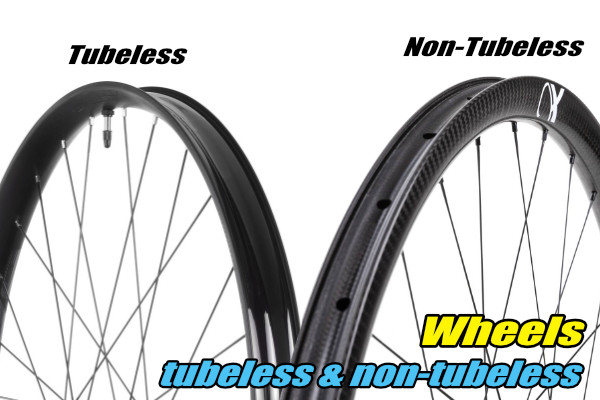 However, the key parameter of tires in.. However, the key parameter of tires in.. June 23, 2022, 10:06 | |
Tubeless tires can hardly be called the know-how of the bicycle industry, however, they still raise questions for many. The topic itself, as a rule, is surrounded by a lot of skepticism and distrust, which are more often explained by a lack of understanding of basic things and a lack of experience in riding such wheels. To dispel all these doubts, we answer the main questions related to tubeless technologies. nine0005
These are bicycle tires that do not have a tube. At the same time, tubeless technology is not only about tires. We are talking about a whole wheel system, which also includes a special rim and a sealant that gives the wheel anti-puncture properties. The tubeless concept makes the bike more comfortable to use and improves its riding performance, which will be discussed in order.
How long ago did this technology appear and can it be trusted? nine0005
Those who hear about bicycle tubeless for the first time usually tend to be suspicious of them. You can dislike this technology for subjective reasons, but you definitely shouldn’t distrust it. Tubeless tubes have been massively used for cars and motorcycles for several decades, and during this time they have not given reason to doubt their reliability.
You can dislike this technology for subjective reasons, but you definitely shouldn’t distrust it. Tubeless tubes have been massively used for cars and motorcycles for several decades, and during this time they have not given reason to doubt their reliability.
The first tubeless systems for bicycles appeared in 1999, when the French rim brand MAVIC collaborated with tire manufacturer Hutchinson to present their concept of a simple and efficient tubeless wheel. In the 2000s, this technology remained the prerogative of mainly professional athletes, who quickly appreciated its main advantages: lighter weight, more air in the wheel, good "traction" and durability. nine0005
In recent years, tubeless has finally ceased to be perceived as something exotic. For example, today a significant part of the MTB and almost all touring cars come with such wheels as standard. A wide variety of sealants are also available on the market, and the number of those who are discovering the benefits of tubeless technology is steadily increasing.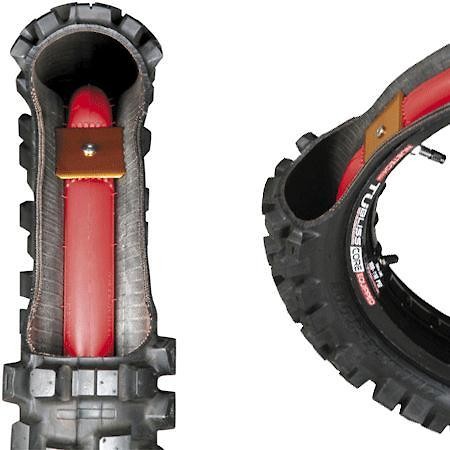
The tubeless system provides a special rim and tires that are labeled tubeless ready or TR. However, the rims themselves are easy to distinguish visually - they have a low side and characteristic walls with recesses, forming a kind of lock in which the tire cord is wedged when air is injected. Due to this, in the inflated state, the rubber reliably and hermetically “sits” on the rim, without breaking off the wheel even at low pressure. The rim itself is additionally glued with a sealing tape, after which the nipples are installed separately. nine0005
The benefits of tubeless wheels are revealed no matter how often and what kind of bike you ride: whether it's weekend trips, extreme downhill or long-distance touring. Nevertheless, for certain categories of cyclists tubeless still open up more opportunities: first of all, we are talking about those who are seriously passionate about off-road.
When actively driving off-road with tubeless tubes, you can ride on lowered wheels and at the same time not be afraid of such an unpleasant type of puncture as a snake bite. Low tire pressure, in turn, gives better handling, dampens vibrations more effectively and generally provides more comfort on difficult tracks. If we are talking about cyclists, then they appreciate tubeless for their anti-puncture qualities. nine0005
Road bikes also use tubeless wheels. Moreover, they are the pioneers of this technology. But road tubeless tubes are a different story: they are designed for different operating pressures and have tangible design differences. Therefore, further we will talk mainly about those tires that are put on mountain, touring and city bikes.
These are the two rim formats that define the features of a tubeless wheel assembly. BST is a standard that involves the installation of a special sealing tape that prevents air from leaking through the holes in the spokes. This is the most common version of tubeless systems. nine0005
This is the most common version of tubeless systems. nine0005
UST is a blind rim in which an additional bridge isolates the spoke holes. Thus, there is no need for laying a sealing tape. In practice, this greatly simplifies life, because when installing a tire (especially without proper experience), the tape tends to crush, which is why you have to reassemble the wheel. It is easy to guess that such rims also have a drawback - their price.
The tubeless system in the form in which we wrote it above is already a full-fledged wheel, it can be installed on a bicycle and hit the road. But there is an important nuance. First of all, tubeless tubes are valued for their anti-puncture qualities: for this, a small amount of a special liquid, a sealant, is poured inside the tire. nine0005
Yes, you can. But you should not do this. Firstly, this is illogical: for no reason you are depriving yourself of the main advantage of tubeless - the anti-puncture effect. But more importantly, it is very difficult (or even impossible) to inflate such a tire in a completely flat state with a portable pump: to do this, you need either a strong floor pump or a booster. Naturally, no one will take such bulky things with them on the road. Filled with sealant 95% of punctures "seal" without a critical loss of pressure, and in most cases there is no need for even light pumping. Thus, the probability of being with a flat tire is very low.
So, if you put tubeless, sealant is still needed. Such fluids are easy to find in any bike shop, they are inexpensive and require replacement on average once every three to four months, so there is no need to talk about any inconvenience. Yes, in order to cope with the fill, you need to acquire a certain skill, but this is much easier than constantly changing broken cameras. In addition, sealant can be replaced once a season in a specialized service. nine0005
Bicycle sealants are based on fine particles (rubber or polymer fibers) suspended in a liquid carrier. Inside the wheel, the sealant does not polymerize: it is in a liquid state and is distributed along the inside of the tire during movement. When a puncture occurs, the air flow begins to push the solution out. A fine suspension clogs the hole, and the sealant dries quickly. Thus, there is a reliable "sealing" of the puncture. nine0005
If we talk about typical punctures - collisions with thorns, wires, small glasses - such damage is self-healing without a noticeable loss of pressure. Usually, a puncture can only be guessed from a small spot on the surface of the tire. Naturally, the sealant works with more complex damage. You can count on it even if you pierce the wheel with a thick nail, 4-5 mm in diameter. If you can’t figure out how a liquid can seal such holes, you can look at YouTube for numerous crash tests demonstrating the miraculous properties of sealants. nine0005
The consumption per tire is from 50 to 100 ml. If we are talking about standard MTV tires, the golden mean is about 60 ml per wheel. The exact dosage will always be written on the bottle. It is difficult to get confused even for those who do not like to read instructions: most sealants have measuring containers or a dosage scale on the bottle itself.
Here, too, everything is conditional and depends on the characteristics of the specific composition and intensity of punctures. In the absence of serious damage that entails the leakage of a large volume of sealant, you can easily skate a whole season on one fill. Some cyclists prefer to do an incomplete start-up gas station and gradually add 20-30 ml of fluid every two to three months. You can also navigate by how effectively the sealant works: if you see that small punctures are sealed with a strong deflation of the wheel, it may be that the composition is no longer enough and it needs to be added. Be that as it may, sealant is a very economical thing that lasts for a long time. nine0005
The sealant inside the tubeless tends to dry out, forming a characteristic film. Whether or not to clean the tire cavity is up to you. This is a purely aesthetic moment, which does not affect the operation of the anti-puncture fluid. The sealant can simply be added as it dries and not bother with unnecessary worries. It is more likely that the tire will completely wear out than it will have time to completely clog with dried filler.
nine0019
Serious damage - large diameter punctures, small cuts, run over nails with subsequent tire rupture - are repaired using special repair worms. These are rubber or fibrous bands that are inserted into the hole to reduce its area and allow the sealant to seal the puncture.
With long longitudinal cuts it is more difficult. Here you need to either sew up the dissection with nylon threads, or stick a patch on the inside of the tire. You don’t have to worry about the tightness of the repair site - the sealant will do this work, of course, if it does not have time to leak out. But being able to inflate a completely flat tire with only a portable pump will require skill. nine0005
In fairness, we note that such complex injuries are rare for most cyclists. But for those who are seriously passionate about off-road, it is better to play it safe with a spare camera. In this case, having caught a cut, you can always drain the sealant, unscrew the nipple from the rim and install a regular camera. And in order not to drive with a “hernia” protruding outward, we recommend placing, for example, a bill folded in half under the cut on the tire.
Tubeless allows you to forget about such an unpleasant form of damage as a "snake bite" forever. It usually happens when at full speed you catch a pothole in the pavement, unsuccessfully jump onto a curb or run into a stone on a downhill. Hitting the edge of a hard object, the tire is crushed, and the rim walls work like incisors, damaging the chamber in two places. In tubeless wheels, this scenario is excluded, because. there is nothing to break through here. Of course, it can be assumed that the rim will cut the tire itself, but this should be a blow of enormous force, which is almost never encountered in practice. nine0005
Rejection of the chamber increases the volume of air in the wheel. This changes the contact patch (it becomes flatter) and allows the wheels to better absorb off-road bumps. Add here the ability to ride at low pressure, without being afraid of a snake bite, and it becomes completely clear why tubeless lovers of hard off-road riding so idolize. Soft tires with a large contact patch "fit" all the bumps in the road, giving excellent traction on rocks, forest primers and other off-road. nine0005
In addition to traction, tubeless tires improve shock absorption, dampen vibrations better, and generally provide more off-road comfort. At the same time, to get the most out of this rubber, you need to experiment a lot with tire pressure, trying to find the indicators that will best suit your individual riding style.
Finally, the camera is extra grams. By refusing them, you can save an average of 70-100 g of weight on each wheel. For some, this may seem like a formality, but it is worth considering the fact that extra grams on the periphery of the wheel have a stronger effect on driving performance. This difference is especially felt on road bikes: road bikes, gravel, touring. nine0005
They also exist. Moreover, it is far from formal. First, it's the price. The difference becomes especially noticeable when you buy tubeless systems separately: rims, tires + small things (tape, removable nipples, sealant). For tubeless you will have to pay an average of one and a half times more than for ordinary wheels, plus or minus the same class. And if we are talking about more advanced UST rims, then this means another + 30-40% to the cost.
With tubeless by default, everything is more difficult in terms of installation (here we are talking about conventional BST systems). You need to learn how to properly glue the tape, accurately insert the nipples, carefully install tight rubber, making sure not to displace the tape and not fill everything with sealant. On the other hand, all this comes with experience, but what you will always have to put up with is the difficulty with pumping a completely flat tire.
A tubeless tube cannot be inflated until its landing board snaps into place on the rim. To do this, you need to sharply introduce air into the tire. The tire should straighten up and fall into the grooves with a characteristic click - then it can be safely pumped further. This all sounds simple if there is a compressor in the garage. Putting a tubeless tube into the grooves by pumping air with an ordinary floor pump is quite difficult, and almost impossible with a portable bicycle pump. nine0005
All this makes life much more difficult.